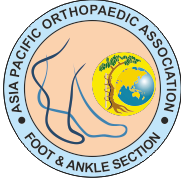Virtual Fellowship 2025
Pathophysiology of neuropathy and neuropathic arthropathy Pathophysiology of impaired healing Charcot
Neuropathy
Table of contents
1. Aetiopathology of Diabetic Neuropathy [edit]
2. Management: Sugar Control by Diet [edit]
2.1. 1. Normal/Conventional Diabetic Diet (Low-Fat, Calorie-Restricted)
Based on the idea that higher LDL-C levels are not the primary concern for long-term mortality, the discussion on diabetic neuropathy shifts entirely to the comparative efficacy of dietary approaches in achieving the most crucial factor: stable and significant blood glucose control.
The aetiopathology of diabetic neuropathy is rooted in metabolic derangement, and management centers on correcting that derangement.1
Aetiopathology of Diabetic Neuropathy [edit]
Diabetic peripheral neuropathy (2DPN), the most common form, results from cumulative damage to peripheral nerves, primarily driven by prolonged hyperglycemia and its metabolic consequences:
Metabolic Pathway Overactivation: Chronic high glucose levels force excess glucose through alternate pathways (like the polyol pathway), leading to the accumulation of toxic byproducts (e.g., sorbitol).
Oxidative Stress: These metabolic shifts generate excessive Reactive Oxygen Species (5ROS), causing oxidative stress. This stress directly damages nerve axons, the myelin sheath (the nerves' protective coating), and Schwann cells.
Microvascular Damage: High glucose damages the walls of the tiny blood vessels (capillaries) that supply the nerves (vasa nervorum). This impairment leads to ischemia (lack of oxygen) and nutrient deprivation, further accelerating nerve death and dysfunction.
Dyslipidemia and Insulin Resistance: Other factors like high triglycerides and insulin resistance contribute to the inflammatory environment that promotes neural damage.
The clinical outcome is the loss of protective sensation, which is the immediate precursor to diabetic foot ulcers and amputation.
Management: Sugar Control by Diet [edit]
The consensus across all major guidelines is that tight glycemic control is the primary, modifiable factorthat can prevent the onset or slow the progression of diabetic neuropathy. The debate lies in which dietary approach is most effective at achieving this.
1. Normal/Conventional Diabetic Diet (Low-Fat, Calorie-Restricted)
A "normal" diabetic diet typically aligns with standard recommendations for the general population: focusing on calorie restriction, complex carbohydrates (whole grains, fruits, vegetables), and low-fat intake (usually ≥45% of calories from carbohydrates).
| Pros | Cons |
| ∙ Standard: Aligns with long-standing guidelines, making resources abundant. | ∙ High Glycemic Load: Carbohydrates, even complex ones, can still cause significant postprandial glucose spikes. |
| ∙ Nutrient-Dense: Emphasis on whole foods ensures adequate fiber, vitamins, and minerals. | ∙ Challenges Adherence: Reliance on calorie restriction often leads to hunger and difficulty maintaining weight loss long-term. |
| ∙ Gradual Improvement: Can lead to modest HbA1c reduction and neuropathy slowing over time. | ∙ Slower HbA1c Reduction: May not provide the rapid, significant glycemic correction needed to halt early nerve damage. |
2. Low-Carbohydrate, High-Fat (LCHF) Diet
The LCHF diet (≤26% of calories from carbohydrates, often ketogenic at ≤10%) is viewed as the most physiologically direct way to control blood sugar.
| Pros | Cons (Under the LDL Paradox Premise) |
| ∙ Immediate Glycemic Correction: By removing the main driver of blood sugar, it often provides superior and rapid HbA1c reduction compared to conventional diets. | ∙ Nutrient Density: If poorly formulated (e.g., relying heavily on processed animal products), it can lead to low intake of fiber and certain micronutrients essential for nerve health. |
| ∙ Rapid Symptom Relief: Anecdotal and emerging evidence suggests some patients experience a quick reduction in neuropathic pain (burning, tingling), potentially due to the anti-inflammatory effects of ketones. | ∙ Long-Term Efficacy: Adherence and metabolic benefits may diminish over the ultra-long term (beyond 2 years), as with any restrictive diet. |
| ∙ Powerful Weight Loss: Often leads to greater initial weight loss, reducing physical stress on compromised feet. | ∙ LDL-C Elevation is Deemed Benign: Since the LDL paradox suggests high LDL-C isn't the main mortality concern, the focus remains on the positiveeffects on blood sugar, Triglycerides, and HDL-C. |
Synthesis: Dietary Efficacy and the LDL Paradox
From the perspective that high LDL-C is not important, the LCHF diet is theoretically the most effective dietary intervention for diabetic neuropathy. This is because:
It corrects the primary pathology (hyperglycemia) more rapidly and robustly than calorie- or low-fat-focused diets.
The metabolic reversal (lower HbA1c, lower triglycerides, lower weight) is the key to preventing the progression of the devastating consequences of neuropathy (loss of sensation, foot ulcers).
Any resulting increase in LDL-C is treated as a non-issue, allowing practitioners and patients to focus on the powerful benefits of LCHF on actual metabolic dysfunction.
Crucial Caveat: Regardless of the dietary choice, strict glucose management necessitates close medical supervision to safely adjust medications (especially insulin) and prevent hypoglycemia.

